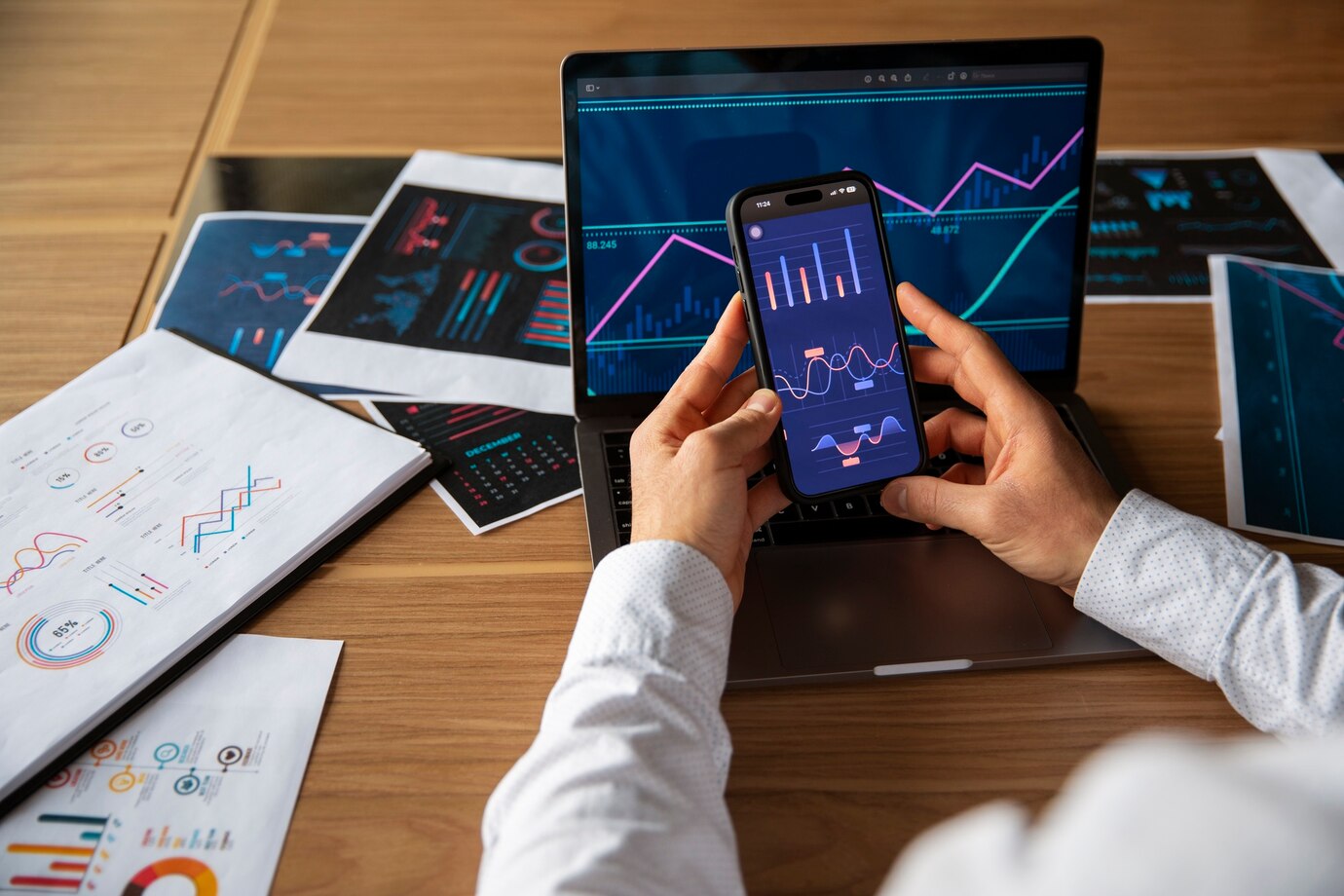In the dynamic landscape of financial markets, the quest for the best trading robot is ever-present. Traders seek efficiency, accuracy, and profitability. In this comprehensive guide, we unveil the top contenders, providing valuable insights to empower your trading decisions.
The Evolution of Trading Robots
Rise of Algorithmic Trading
The rise of algorithmic trading has significantly reshaped the landscape of financial markets, ushering in an era of unprecedented speed and efficiency. This transformative approach to trading leverages complex mathematical models and algorithms to make split-second decisions, outpacing traditional manual trading methods. Algorithms, designed to analyze vast amounts of market data with remarkable precision, empower traders to execute trades swiftly and capitalize on fleeting opportunities.
This shift towards algorithmic trading can be attributed to its ability to eliminate human emotions from the decision-making process. Unlike human traders, algorithms operate based on predefined rules and logic, mitigating the impact of fear, greed, or other emotional factors that often influence trading decisions. As a result, algorithmic trading has gained popularity for its potential to enhance consistency and objectivity in the execution of trading strategies.
Understanding Machine Learning in Trading
Understanding machine learning in trading opens the door to a new era of data-driven decision-making within financial markets. Machine learning, a subset of artificial intelligence, enables trading systems to learn from historical data patterns and adapt to changing market dynamics. This innovative approach empowers traders to harness the power of predictive analytics, making informed decisions based on a machine’s ability to identify trends and correlations that may elude human intuition.
In the realm of trading, machine learning algorithms analyze vast datasets, identifying hidden patterns and relationships that may impact asset prices. This capability is particularly valuable in adapting to the intricate and ever-changing nature of financial markets.
Exploring the Best Trading Robots
In the ever-evolving landscape of financial markets, exploring the best trading robots has become a crucial endeavor for traders seeking efficiency and profitability. Let’s delve into the top contenders that have been making waves in the realm of automated trading.
- Autonomous Trading Systems: These cutting-edge trading robots operate with a high degree of autonomy, executing trades based on predefined algorithms. Their efficiency lies in the ability to react swiftly to market changes, making them a favored choice for traders looking for hands-free, algorithm-driven solutions.
- AI-Driven Trading Bots: Embracing artificial intelligence, these trading bots leverage machine learning algorithms to adapt to market trends. They analyze vast datasets, identify patterns, and make informed decisions. The self-learning capability of AI-driven bots positions them as formidable tools for traders navigating dynamic market conditions.
- High-Frequency Trading (HFT) Robots: Designed for lightning-fast execution, HFT robots capitalize on minuscule price differentials within fractions of a second. Their advanced algorithms and low-latency infrastructure make them ideal for traders aiming to capitalize on short-term market fluctuations and exploit arbitrage opportunities.
- Cryptocurrency Trading Algorithms: With the rise of digital assets, trading robots specialized in cryptocurrencies have gained prominence. These robots navigate the volatile crypto market, employing algorithms tailored to the unique challenges and opportunities presented by digital currencies.
- Quantitative Trading Systems: Quantitative trading robots utilize mathematical models and statistical techniques to identify trading opportunities. These systems rely on quantitative analysis, leveraging historical data to formulate strategies that align with specific risk parameters and market conditions.
Exploring the best trading robots involves understanding the unique features, advantages, and potential drawbacks of each. Whether it’s the autonomy of autonomous trading systems, the adaptive nature of AI-driven bots, or the lightning-fast execution of HFT robots, traders must choose the robot that aligns with their trading goals and risk tolerance. These robots represent the forefront of innovation, providing traders with powerful tools to navigate the complexities of today’s financial markets.
Unlocking Efficiency with Trading Robots
In the pursuit of efficiency, trading robots have emerged as transformative tools, revolutionizing the way trades are executed and managed. Let’s explore the key facets of how these robots unlock unprecedented efficiency in the dynamic world of financial markets.
| Feature | Description |
| Automated Execution | Trading robots excel in automating the execution of trades. Their ability to swiftly act on predefined algorithms ensures timely responses to market opportunities, minimizing delays and optimizing trade execution speed. |
| Real-time Data Analysis | The efficiency of trading robots stems from their capability to perform real-time data analysis. These robots continuously analyze market data, identifying patterns and trends that may go unnoticed by human traders. This data-driven approach enhances decision-making, allowing for informed and timely actions. |
| 24/7 Market Monitoring | Trading never sleeps, and neither do trading robots. These systems tirelessly monitor markets 24/7, eliminating the limitations of human endurance. The round-the-clock vigilance ensures that trading opportunities are identified and acted upon, even in the absence of human intervention. |
The integration of these features collectively contributes to the unparalleled efficiency of trading robots. The automated execution minimizes response times, real-time data analysis enhances decision accuracy, and continuous market monitoring ensures that no opportunity is overlooked. Traders leveraging these robots experience a level of efficiency that goes beyond traditional manual trading, enabling them to navigate markets with agility and precision. As technology continues to advance, the efficiency gains facilitated by trading robots position them as indispensable tools for the modern trader.
Risks and Mitigations: A Transparent Perspective
Navigating the world of trading robots comes with inherent risks, and it’s crucial for traders to approach this technology with a transparent understanding of potential drawbacks. Here’s a candid look at the risks associated with trading robots and effective mitigations to ensure a balanced and informed trading experience.
- Technical Glitches:
- Risk: Trading robots are susceptible to technical glitches, system failures, or connectivity issues, which can result in unintended trades or financial losses.
- Mitigation: Implement robust risk management protocols, regularly update and maintain trading algorithms, and have contingency plans in place to address technical issues promptly.
- Market Volatility:
- Risk: Rapid market fluctuations can trigger unexpected behavior in trading robots, leading to losses during extreme market conditions.
- Mitigation: Set predefined risk parameters, incorporate volatility filters in algorithms, and regularly reassess and adjust trading strategies to align with changing market dynamics.
- Over-Optimization:
- Risk: Excessive optimization of trading algorithms for historical data may lead to poor performance in real-time market conditions.
- Mitigation: Strike a balance between historical performance and adaptability to current market trends. Regularly test and optimize algorithms with recent data to ensure relevance.
In the Spotlight: Trading Robot Reviews
In the dynamic world of automated trading, trading robot reviews take center stage, offering invaluable insights into the performance, reliability, and user experiences of these advanced systems. These reviews serve as a spotlight, illuminating the strengths and weaknesses of various trading robots, helping traders make informed decisions.
One significant aspect covered in trading robot reviews is the user experience. Traders share their firsthand encounters with different robots, detailing the ease of use, interface intuitiveness, and overall satisfaction. These insights provide prospective users with a glimpse into what to expect, ensuring they choose a robot aligned with their preferences and technical proficiency.
Performance metrics also come under scrutiny in these reviews, shedding light on a trading robot’s ability to deliver consistent results. Traders analyze factors such as profitability, risk management, and the robot’s adaptability to different market conditions. This thorough evaluation enables prospective users to gauge the potential effectiveness of a trading robot and its compatibility with their unique trading goals.
Moreover, trading robot reviews often delve into the support and community aspects. Traders assess the quality of customer support provided by the robot’s developers and the availability of user communities. A supportive community and responsive customer service can significantly enhance the overall user experience, offering assistance when needed and fostering a sense of camaraderie among users. In essence, trading robot reviews play a pivotal role in demystifying the complex landscape of automated trading, providing a roadmap for traders to navigate the myriad options and find a robot that aligns with their objectives.

